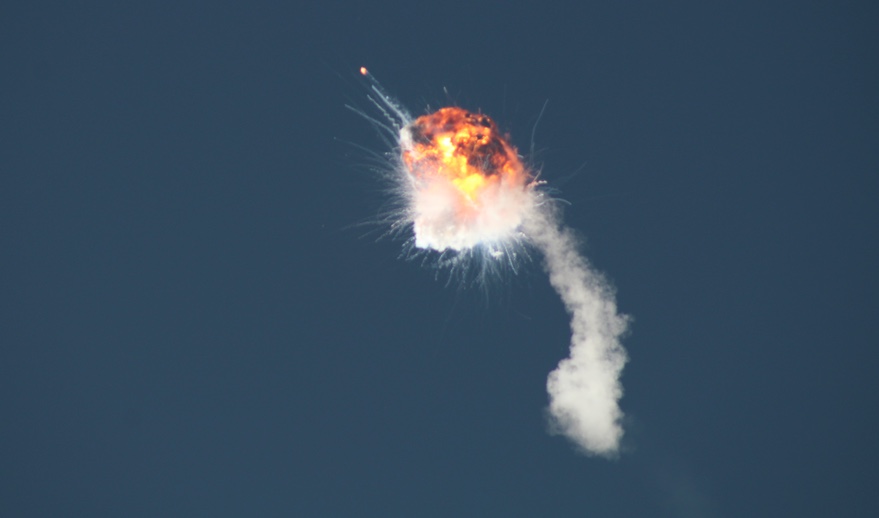WASHINGTON — A proposal by the National Transportation Safety Board (NTSB) that would give the agency a greater role in investigating failures of commercial launches is facing strong opposition from both the industry and the Federal Aviation Administration.
The NTSB issued a notice of proposed rulemaking, or NPRM, in November regarding commercial space investigations. The proposed regulation is intended to codify the role that the board plays in investigating accidents involving commercial launches and reentries, much as it does in various modes of transportation.
The regulations would require companies conducting a launch or reentry under an FAA license or experimental permit to immediately notify the NTSB in the event of a mishap. The NTSB would conduct an investigation to determine the probable cause and provide recommendations to avoid similar events in the future.
NTSB has helped investigate space-related incidents in the past, including the October 2014 accident involving Virgin Galactic’s SpaceShipTwo that killed its co-pilot and seriously injured the pilot. A 2004 memorandum of understanding that includes NTSB, the FAA and the U.S. Air Force, as well as an older agreement between NTSB and FAA, currently governs that partnership.
The NTSB argues that the existing agreements are out of date and that it must now explicitly state its authority to do so under a section of law called Subpart F in the document. “Notably, at the time both documents were signed, commercial human space launches were not viable,” the NTSB stated. “With commercial human space flight now a reality, however, the NTSB believes codifying its authority to investigate commercial space safety accidents and incidents in Subpart F is necessary.” The NTSB adds that it believes that, under federal law, it has “statutory priority over any investigation by a U.S. department or agency.”
The release of the NPRM started a public comment period that closed Jan. 18. It resulted in more than a dozen responses, most submitted near the deadline. It included feedback from many launch companies and trade groups that opposed elements of the proposal as well as the NTSB’s effort that, to them, appeared to usurp the FAA’s existing role to oversee the industry.
Many argued that the NTSB’s proposed regulation would duplicate investigations overseen by the FAA. “The NRPM would effectively create duplicative and conflicting incident investigation authorities between the FAA and NTSB, creating regulatory uncertainty for the commercial space launch industry,” wrote Blue Origin in its response to the proposal.
The company added that the way the regulation was written could “inadvertently lead to NTSB’s unlimited and non-statutory authority to initiate incident investigations of commercial space launch providers, even without any vehicle damage or destruction, or serious injury or death.” [emphasis in original]
SpaceX, in its response, claimed that NTSB was overstepping its authority when the agency considered commercial spaceflight a “mode of transportation” within its jurisdiction when it is instead “a nascent industrial sector that is still in development, and is appropriately regulated as such.”
SpaceX cited its own iterative testing process, arguing that approach would be adversely affected under the NTSB proposal “and could create a chilling effect on safety and innovation by discouraging operators from seeking test and flight opportunities to improve upon the status quo by introducing new designs, performance upgrades, and improved safety systems.”
Industry groups also criticized aspects of the proposed regulations. The Aerospace Industries Association recommended the NTSB update the proposal to reflect comments and “to conduct further analysis to ensure regulations, if any, are harmonized with existing FAA and NASA requirements before proceeding.” The Commercial Spaceflight Federation disagreed with the NTSB’s assertion it had the authority to investigate commercial spaceflight mishaps, noting existing authorities by the FAA and the fact that commercial human spaceflight is nowhere near as mature as other modes of transportation.
The FAA itself weighed in against the NTSB’s proposal. FAA Administrator Steve Dickson said the existing agreement with NTSB worked well and “with some updates, should continue to serve effectively.” Those changes, he said, would include consolidating existing agreements and updating them to reflect changes in federal law since 2004.
“I encourage the NTSB to instead refocus on its current successful working relationship with the FAA and build on past successes to create an improved and unified effort moving forward,” he concluded.
Not all the comments were critical of the NTSB’s proposal. Airlines for America (A4A), an airline industry trade group, endorsed a greater role for the NTSB in investigating commercial spaceflight mishaps. “Given the continuous development of commercial space transportation, A4A believes that official commercial space investigation procedures and rules should be put in place,” the organization wrote.
Outside of the formal public comment period, two key members of Congress weighed in against the NTSB proposal. In a letter to the NTSB in November, Reps. Frank Lucas (R-Okla.) and Brian Babin (R-Texas), the ranking members of the full House Science Committee and its space subcommittee respectively, asked for documents explaining the NTSB’s rationale for the proposed regulation.
“NTSB’s attempts to expand its authority would alter the long-standing commercial space accident investigation process and significantly impact the commercial space launch industry, U.S. economic competitiveness, scientific discovery, space exploration, international cooperation, national security, and safety,” they wrote.
The NTSB offered no schedule for reviewing the comments and either proceeding with the regulations, requesting comment on a modified version or withdrawing the proposal.
